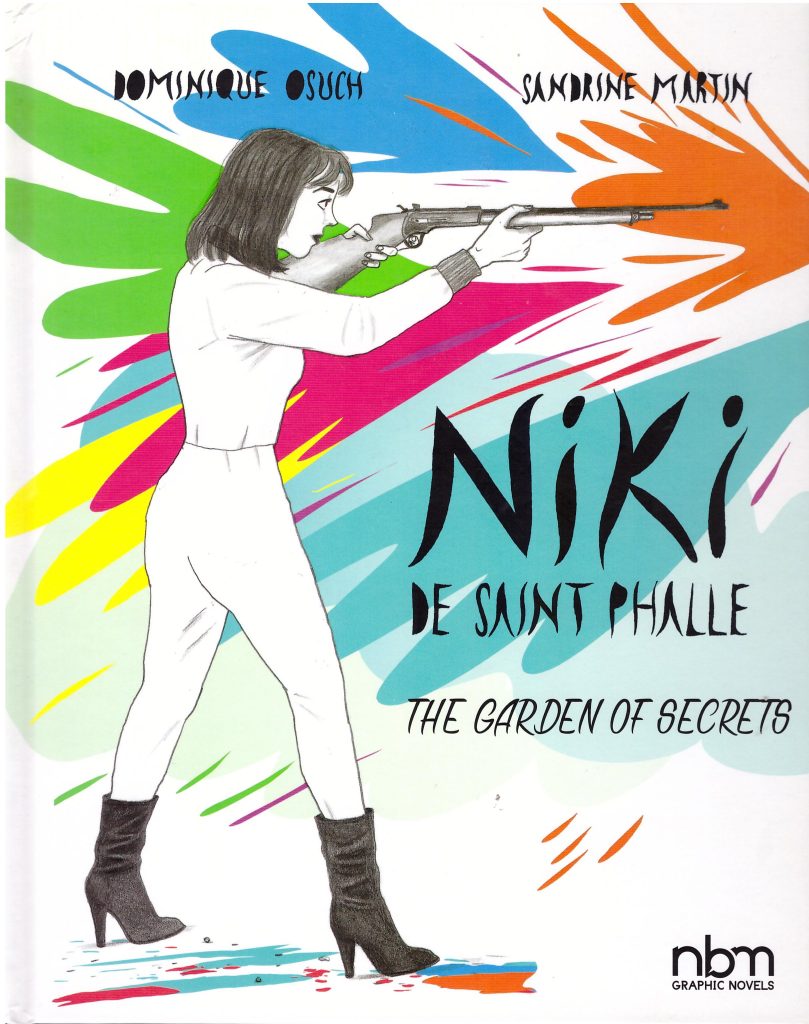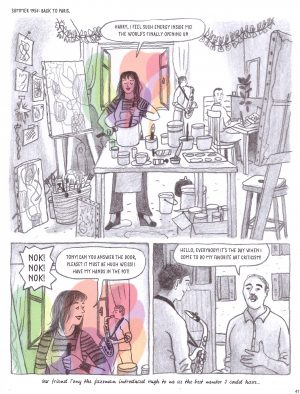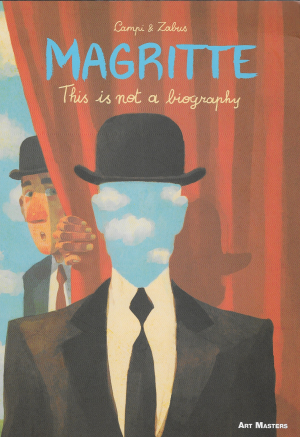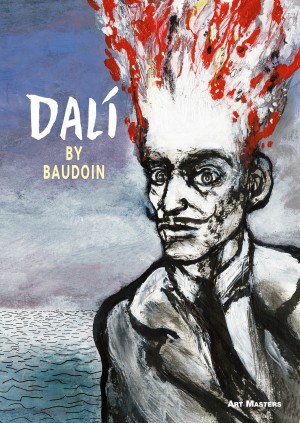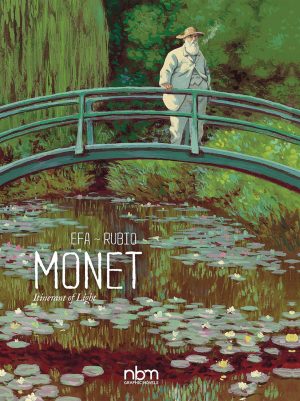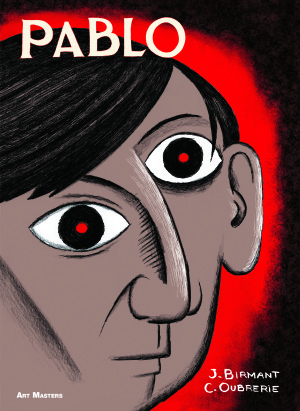Review by Frank Plowright
Niki de Saint Phalle’s life story is an inspiration, one of overcoming a lack of parental warmth, abuse, mental illness, and teaching herself artistic techniques to become an internationally recognised artist with an entire park devoted to her work. However, The Garden of Secrets falls disappointingly short of what it could be.
Surely a major consideration of an artist’s visual biography is to represent their work and their outlook in combination with the details of their life. In this respect The Garden of Secrets is unimaginably disappointing. An image search shows de Saint Phalle’s art as expressively vibrant, revelling in the use of colours as bright as they could be created. This is largely black and white with only very rare deviations from the use of extremely muted colour. An entire book using de Saint Phalle’s colour sense would be overwhelming, but the colour here is half-hearted, and in places half-finished, as if Sandrine Martin couldn’t be bothered beyond a few splodges. It serves the subject extremely poorly, with only a gloss illustration on the back cover approaching the look of de Saint Phalle’s defining work. That the art is so flat and two dimensional is another disappointment, again a puzzling contrast to de Saint Phalle’s own three-dimensional structures, examples of which are seen more toward the end of the book. The most effective artistic implementation on Martin’s part is a series of illustrations of de Saint Phalle in tarot cards, separating the chapters and noting the artistic progression in her life and reflecting her Italian Tarot Garden.
Dominique Osuch uses a first person narrative to relate the major events in de Saint Phalle’s life, as if she herself were telling the story. Perhaps she is, and the narrative captions are quotes, but this isn’t confirmed. They build a picture of a driven woman who first uses her art to exorcise her anger, then to explore womanhood and femininity, never shying away from balancing her cheerful exhibits with those stressing negativity. She channels passion into every project, embracing the surreal, avant garde and shocking, yet the intuitive laying out of events contextualises this, Osuch making sense of pieces, revealing their truths. Revelations can be expanded by consulting the three page chronology at the end of the book, compressing the influential moments and periods of de Saint Phalle’s life. It also helps in identifying the people who drift in and out of her orbit.
For all her embracing the avant garde, her attraction to brightness ensured that de Saint Phalle’s work was always accessible to the wider public at some level, and as underlined late in the book, de Saint Phalle considered herself mainstream. Martin’s lacklustre art hampers the chances of The Garden of Secrets being accepted in the same way.
